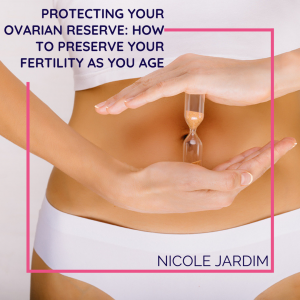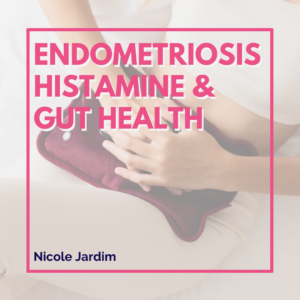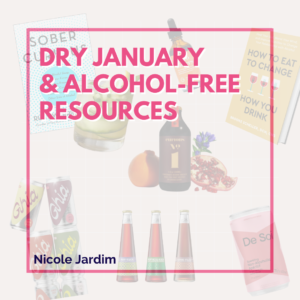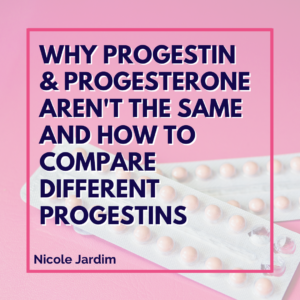We spend on average over $350 billion on anti-aging products a year in the US. That’s 350,000,000,000!
We are obsessed with the visual changes our bodies undergo as we get older, spending countless hours stressing about the appearance of a new wrinkle on our faces AND countless dollars trying to get rid of it! But while we scrutinize every detail of our outward appearance, few of us ever stop to think about the aging that is going on just below the surface.
Unbelievably, a woman’s reproductive system ages faster than any other system in the body.
How quickly or slowly your reproductive system ages will impact your fertility and your ability to get pregnant later in life. For most of us, this is far more important than a silly wrinkle on our face so let’s put down the polypeptide cream and learn some anti-aging tricks for our ovaries instead!
Ovarian aging and your ovarian reserve
Ovarian tissue is more sensitive to aging than any other tissue in the human body (whaaat!) and as it gets older, both the number of follicles it houses and the quality of these follicles reduces.
How many viable follicles a woman has in her ovaries at any given time is referred to as her, “ovarian reserve” (OR). We are born with around 1-2 million follicles and as we age our OR gradually declines, eventually depleting entirely leading to menopause around the age of 50 (sometimes sooner or later depending on each woman’s unique circumstances and genetic makeup).
So, your reproductive age is directly linked to your ovarian reserve. The higher your OR, the younger your reproductive system is!
For some women though, the rate of follicular reduction happens more rapidly leading to poor ovarian reserve and sometimes premature ovarian failure (POF). This can happen for a variety of reasons – certain genetic mutations, exposure to radiation and most importantly health and lifestyle choices – but the resulting effects of these are the same; advanced ovarian aging.
Regardless of whether you have a healthy ovarian reserve or whether you are experiencing advanced ovarian aging, taking steps to help keep your ovaries young and healthy should be a top priority, not just for the preservation of your fertility but for your overall health. Remember, your menstrual health is like a window into your big health picture.
What affects ovarian aging?
As I mentioned, we all start our lives with around 1-2 million follicles in our ovaries. By the time we reach puberty, this number has declined to around 300,000 – 500,000. Each month, during the reproductive years of our lives, we activate a handful of follicles to progress through the stages toward producing an egg. Out of this group, one follicle (the dominant follicle) is selected each month to proceed to the pre-ovulatory stage while the rest undergo atresia.
Throughout these reproductive years, for every one dominant follicle selected, we lose, on average, 1,000 primordial follicles! Talk about natural selection! Nature is one picky mistress!
FSH and your ovarian reserve
So, who decides how many follicles need to be sacrificed in order to select one singular dominant one? The head of this selection committee is a hormone called Follicle Stimulating Hormone (FSH).
As its name implies, FSH stimulates a selected group of follicles each month to begin the process of moving through the pre-ovulatory development phases with one of these lucky contestants emerging in the end as the dominant follicle. It’s kind of like a massive cellular production of The Hunger Games going on inside your body each month!
Your FSH levels are extremely important in regulating your ovarian reserve. If FSH levels become elevated, more follicles will be stimulated than are necessary causing more to be sacrificed each month leading to a depletion in ovarian reserve. Conversely, if FSH levels are low, this can cause a reduction in activated follicles leading to a failure to ovulate. For these reasons, balanced FSH levels are imperative for rock-solid fertility.
The role of Inhibin B and AMH on ovarian reserve
Just like estrogen, there are other balances and counterbalances that help to keep FSH in line. Its other counterbalances are two negative regulators called Inhibin B and Anti-mullerian hormone (AMH) which, when released, counter the effects of FSH.
What’s interesting about this particular system is that the main source of these two counterbalances (Inhibin B and AMH) are your follicles themselves. As FSH attempts to recruit follicles to be sacrificed in its morbid version of Hunger Games, the follicles themselves release an army of their own to defend its follicular population! Think of FSH as Donald Sutherland and Inhibin B/AMH as Jennifer Lawrence. Okay, I’ve beaten that analogy to death!
The issue with this system is that it’s a feedback loop that accelerates over time. The more follicles that are sacrificed, the less there are to release Inhibin B and AMH to defend against FSH, leading to higher FSH levels and fewer follicles! This is the cycle that eventually leads to a complete depletion of follicles and the end result of menopause.
This is also why high FSH often correlates with low AMH (anti-mullerian hormone) in test results.
You can get this at home AMH test from Lets Get Checked. Be sure to use code Hormones20 to get 20% off the price of the test.
How to slow down ovarian aging
So now that we understand the natural process of reproductive aging, let’s look into ways that we can slow this process down and see if we can find the secret to the fertility fountain of youth.
As we’ve seen, having balanced FSH levels is imperative to maintaining a healthy rate of reproductive aging. Remember, FSH gets counterbalanced by Inhibin B and AMH which come from follicles in your ovaries.
So, if you’re experiencing elevated FSH levels this is most likely due to an insufficient amount of these counterbalancing hormones due to a low ovarian reserve. Focusing your attention on lowering your FSH will not address the real problem of poor ovarian reserve.
If you want to preserve your fertility, your energy should be spent on protecting the follicles and oocytes that remain in your reserve. To do this we need to look at strengthening your pool of follicles at the cellular level.
We witness cellular aging every time we look in the mirror and cringe at the sight of a new wrinkle or an uninvited sagging in an area that once was firm and impervious to the pull of gravity! These same things are also happening to the cells within us that we can’t see.
Just as we provide our skin cells with lotions and potions to help keep them young, we also need to lend a helping hand to the unnoticed cells within us, specifically the ones we hope one day will become our beautiful babies!
The oocytes within your follicles are extremely susceptible to damage over time. These egg cells are produced in the first fetal stages of our lives and then subsequently “rest”, sometimes for as long as 45 years, until they are activated.
During this long resting period these cells can be weakened and damaged by toxins flowing through our body. Keeping these cells healthy and protected is not just important for your fertility, it’s also imperative for the health of your baby.
How to protect your follicles and eggs
1. ATP
If we were to ask our cells what they want for Christmas each year, their answer would always be the same; Adenosine Triphosphate (ATP)! They love this stuff! ATP is produced by our mitochondria. It is the battery power that we run on and is considered to be the energy engine of life as we know it. If you want happy cells you only need to remember these seven letters, M.O.R.E. A.T.P!
One way to support your mitochondrial function and raise your ATP levels is to improve the foundations of your diet. Lowering intake of inflammatory foods and increasing intake of nutrient dense foods will power up your mitochondria! Start with my Harness Your Hormones 28 Day Program.
Nutrients like the vitamins A, B complex, C and E, as well as CoQ10, magnesium, selenium and N-acetyl cysteine are essential to the conversion of food energy into your cell’s energy (ATP). When I say essential, I mean this ain’t gonna happen without them so make sure you are getting them in the form of food and/or quality supplements.
You’ll find all these supplements in my Bulletproof Your Fertility Guide that comes free with the purchase of Harness Your Hormones!
Other ways to support your mitochondria include red light therapy (check out Orion Red Light and use code PERIOD for 10% off all of their products), using an infrared sauna and consistent exercise.
2. Blood flow and Oxygenation
Our cells need a constant supply of oxygen in order to function properly and remain healthy. Providing adequate oxygen to your cells is largely dependent on adequate blood flow. We spend a lot of time sitting these days and this kinda squishes our reproductive organs for long periods of time, reducing blood flow to the area.
Here are some of the ways to improve that:
- Consistent exercise and movement
- Using a standing desk
- Rebounding on a mini trampoline to get your lymph moving
- Castor oil packs are a good way to get blood flowing and they have many other benefits too. Here’s a post I wrote about Castor Oil Packs
- Abdominal massage therapy. See this post to learn more.
3. Antioxidants
In addition to providing our cells with the energy and oxygen they need to flourish, we also need to give them defenses against the harmful elements that they are constantly in contact with.
Reactive Oxygen Species (ROS) and Reactive Nitrogen Species (RNS) are known as “free radicals” and have been shown to cause damage and death to the cells they come in contact with. Luckily our bodies have scavengers that travel around capturing these harmful radicals and removing them from our system. These heroic scavengers are called antioxidants.
When our levels of free radicals exceeds our ability to scavenge them, our bodies enter a state called oxidative stress (OS). Studies have shown that prolonged OS is one of the main factors involved in ovarian aging.
In one study, women with premature ovarian failure who had failed to become pregnant using IVF were given antioxidants which resulted in a reduction of free radicals and a high percentage rate of pregnancy on their next IVF attempt [2]. This is pretty major stuff people!
Best Antioxidant Supplements For Fertility
Coenzyme Q10 or CoQ10 is a powerful antioxidant that plays an essential role in fertility by helping the mitochondria produce energy that is used by our cells. Since egg cells are so large they require more energy to produce healthy eggs, making adequate amounts of Coq10 vital for this process. It’s safe to say this applies to sperm cells as well and has been shown to increase sperm motility and count.
As we age the amount of Coq10 in our bodies decreases which can lead to a decrease in the quality of our eggs. This is why it’s Coq10 supplementation has been shown to improve ovarian reserve and egg quality. It also supports healthy pregnancy because the placenta contains a lot of CoQ10 to protect the fetus from oxidative stress, and it helps prevent pre-eclampsia. I recommend supplementing using Designs for Health CoQ10 – dosage is 50-100mg a day.
N-Acetyl Cysteine or NAC is a precursor to glutathione, has been shown to be a very powerful antioxidant. Glutathione protects the liver from damage and it plays a key role in supporting healthy liver detoxification function. It is important for good egg quality and egg DNA, as well as sperm motility, count, morphology and reduction in DNA fragmentation. I recommend using Integrative Therapeutics NAC or Pure Encapsulations NAC. The recommended dose is 600 milligrams, twice daily for 28 days, up to 12 weeks.
In conclusion, preserving your fertility is as much about protecting the health of your future baby as it is about protecting the health of your reproductive system (which impacts everything!).
Whether you’re young and not yet considering children or you’re older and your clock is ticking, we all need to remember these tiny gifts (eggs) that we were born with and do everything we can to help protect them.
NOTE: There have been some interesting advancements recently in the area of stem cells where studies are being done to find ways of growing new, young and healthy oocytes. These treatments can be extremely helpful for women with premature ovarian failure or poor ovarian reserve. The most promising treatment in this area is called Ovarian Rejuvenation Therapy using PRP. There are a number of clinics around the world offering this procedure.
Sources:
[1] Tarin J J. Aetiology of age–associated aneuploidy: A mechanism based on the ‘free radical theory of ageing’. Hum Reprod, 1995, 10: 1563–1565
[2] Tamura H, Takasaki A, Miwa I, et al. Oxidative stress impairs oocyte quality and melatonin protects oocytes from free radical damage and improves fertilization rate. J Pineal Res, 2008, 44: 280–287




8 thoughts on “Protecting Your Ovarian Reserve: How to Preserve Your Fertility As You Age”
Hello Nicole,
I have POF at age 33 and doctors refused ivf for my case. You think if AMH is almost zero, jts still worthy to follow the program of supplements and castor oil? Or castor oil is not recommand it?
Maria
Can I increase my AMH levels from 0.6? At age 44?
Hey! Perhaps a stupid question but based on all the folicle maths above, does that not mean that being on the pill until you want to have kids is the best way as it means you don’t ovulate therefore stopping all the other follicles being rejected?? I’ve just come off the pill but reading this makes me feel I should still be on it! Thanks
The pill prevents normal ovulation entirely, which comes with its own huge set of issues, as your body consequently stops producing certain of its own hormones that are necessary for so many things in the body. And, unfortunately, eggs are still regularly lost through apoptosis whether on the pill or pregnant or nursing and not ovulating. Better to get off the pill and find an alternative form of natural birth control.
I find your articles fascinating. I am also interested in how you think green tea as an anti oxidant might impact ovarian health?
Thanks so much Olivia! The EGCG in green tea has been shown in studies to have anti-cancer properties, including ovarian cancer. I am making an assumption here, but I feel that this protective effect is beneficial not only in preventing cancer but in maintaining ovarian function overall.
Hi Nicole,
Would amla, decaf green tea and wheatgrass be specifically beneficial with egg health? Also how does the supplement dim affect egg health?
Thanks
DIM supports the first phase of liver detoxification, so it will protect ovarian health and function by improving the elimination of potentially harmful toxins from the body via the liver. I’m not a huge fan of anything decaf because of the process it goes through to become decaffeinated. I’ve never used AMLA so can’t speak to it’s benefits from a personal perspective, but I have heard good things. I used to use a lot of wheat grass but I am sure I’m allergic to it, so stopped that. Ultimately, the more nutrients you consume and the more you optimize your body’s detoxification pathways, the better chance you have of preserving your fertility and ovarian function. It all just has a cumulative effect. 🙂